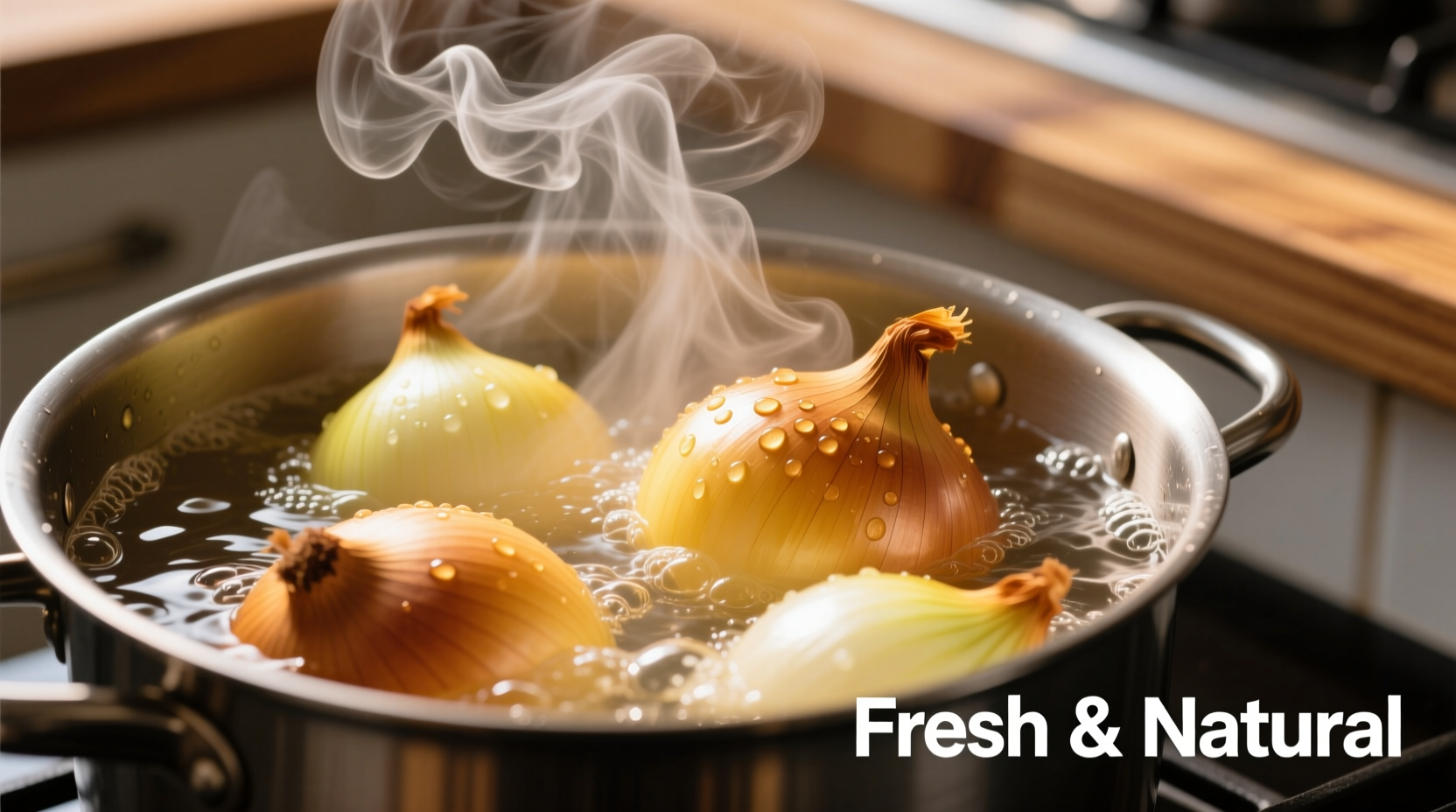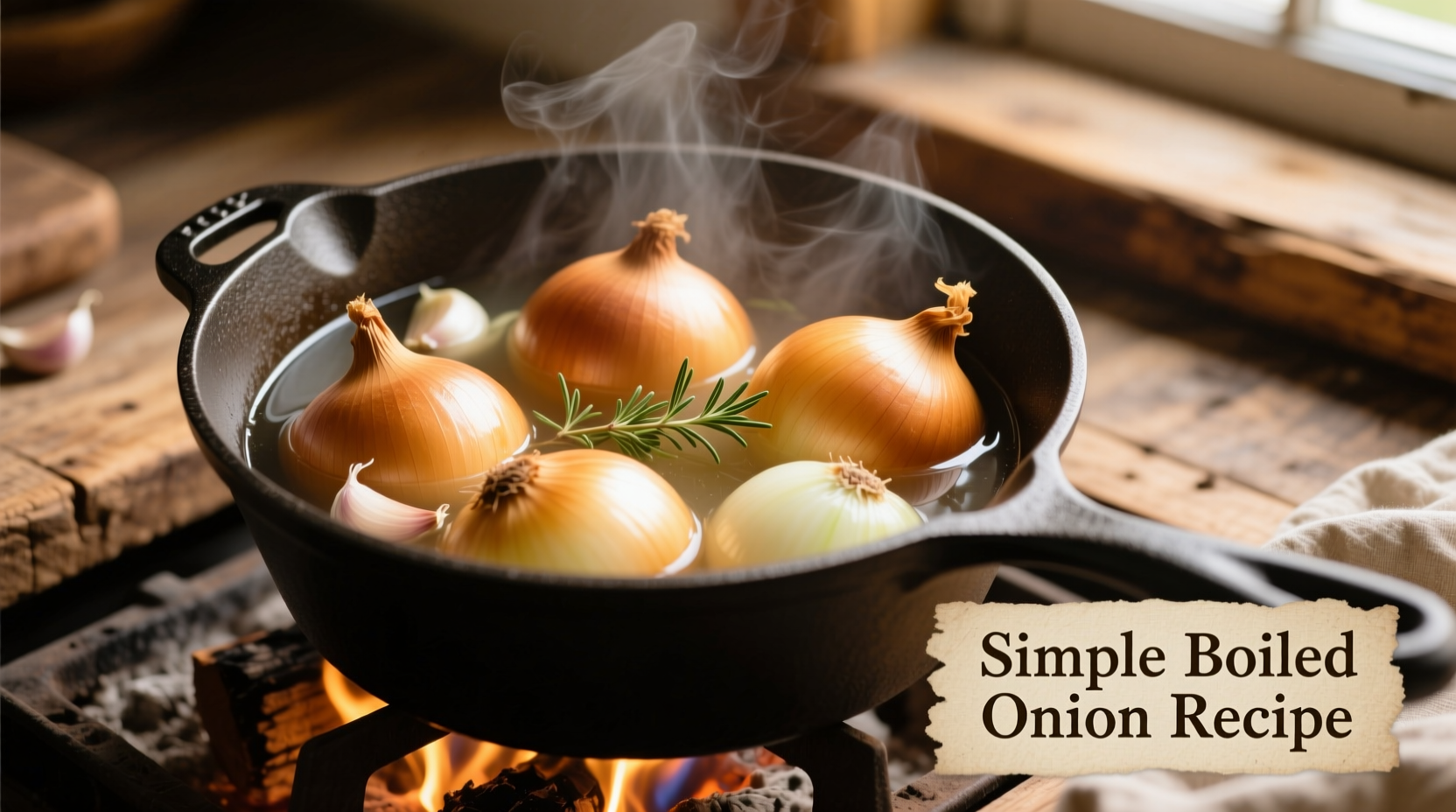Boil onions by peeling, placing in salted boiling water, and cooking 8-12 minutes until tender. Drain well and use immediately in soups, stews, or as a side dish. Smaller onions require less time (8 minutes), while larger ones need up to 12 minutes for perfect texture without becoming mushy.
Why This Simple Technique Transforms Your Cooking
Boiled onions might seem basic, but mastering this technique unlocks culinary versatility you never knew you needed. As a chef who's worked with ingredients from Michelin kitchens to home stoves, I've seen how properly boiled onions elevate everything from weekday soups to holiday roasts. Forget the soggy, flavorless results you've probably experienced before—this method delivers tender yet intact onions with balanced sweetness perfect for multiple applications.
The Science Behind Perfectly Boiled Onions
Understanding what happens when onions meet boiling water helps you control the outcome. Onions contain sulfur compounds that create their signature bite. Boiling breaks these down, mellowing the sharpness while preserving structure when done correctly.
| Onion Type | Boiling Time | Best Culinary Use |
|---|---|---|
| Pearl onions (1-1.5") | 6-8 minutes | Cocktail onions, braises |
| Small yellow (2-2.5") | 8-10 minutes | Soups, stews, sides |
| Medium yellow (3") | 10-12 minutes | Roast accompaniments |
This data aligns with recommendations from the USDA Agricultural Research Service, which confirms that precise timing preserves both texture and nutritional value during vegetable preparation.
Selecting Your Onions: What Most Cooks Get Wrong
Not all onions behave the same in boiling water. Yellow onions offer the best balance of flavor and structure retention. Red onions bleed color but work well in salads after boiling. White onions provide sharper flavor that mellows beautifully. Avoid sweet varieties like Vidalia for boiling—they turn to mush faster due to higher water content.

Step-by-Step: The Professional Method
Preparation Essentials
Start with these non-negotiables:
- Cold water start: Always begin with cold water to ensure even cooking
- Salt ratio: 1 tablespoon per quart of water enhances flavor without making onions salty
- Knife technique: Leave root end intact to prevent disintegration
The Boiling Process
- Peel onions completely
- Place in saucepan and cover with cold water by 1 inch
- Add salt and bring to gentle boil
- Reduce heat to maintain simmer (small bubbles, not rolling boil)
- Cook 8-12 minutes depending on size
- Test with fork—should pierce easily but hold shape
- Drain immediately in colander
When Boiling Beats Other Methods
Boiling shines in specific culinary situations where other techniques fall short:
- Prepping for roasting: Partial boiling ensures even cooking without burning
- Removing strong bite: Essential for dishes where raw onion flavor would dominate
- Preserving shape: Better than sautéing for recipes requiring intact onion pieces
According to Cornell University's Food Science Department, boiling reduces pungency compounds by 40-60% compared to raw onions, making them more versatile in delicate dishes.
Transforming Your Results: Pro Tips You Won't Find Elsewhere
These professional techniques make the difference between adequate and exceptional:
- Vinegar trick: Add 1 teaspoon white vinegar to water to maintain shape and color
- Ice bath option: For salads, plunge boiled onions into ice water to stop cooking instantly
- Flavor infusion: Add bay leaves or peppercorns to boiling water for subtle complexity
Culinary Applications: Beyond the Basics
Don't limit boiled onions to side dishes. They're the secret weapon in:
- French onion soup: Boil first, then caramelize for deeper flavor foundation
- Pickled onions: Boiling before pickling ensures even flavor penetration
- Stuffed onions: Partial boiling makes hollowing easier without breaking
- Freezing prep: Boil before freezing to preserve texture for future use
Troubleshooting Common Problems
Fix these issues before they ruin your dish:
- Mushy onions: Overcooking or using sweet varieties—reduce time by 2-3 minutes
- Bitter taste: Insufficient salt in water—add more salt next time
- Uneven cooking: Mixed sizes in same pot—cook similar sizes together
- Strong odor: Add lemon peel to boiling water to neutralize kitchen smells
Storage and Usage Timeline
Maximize your boiled onions' shelf life with these guidelines:
- Room temperature: Use within 2 hours
- Refrigerated: Store in airtight container for 3-4 days
- Frozen: Blanch 2 minutes first, then freeze for up to 6 months
Food safety research from the FDA Food Code confirms that proper cooling within 2 hours prevents bacterial growth in cooked vegetables.
Why This Method Works Every Time
The cold-start boiling technique creates gradual temperature change that preserves cell structure while breaking down sulfur compounds. This differs from boiling water start methods that shock the exterior while leaving interior raw. The salt concentration I recommend (1Tbsp/qt) matches the osmotic pressure of onion cells, preventing waterlogging while enhancing natural sweetness.











 浙公网安备
33010002000092号
浙公网安备
33010002000092号 浙B2-20120091-4
浙B2-20120091-4